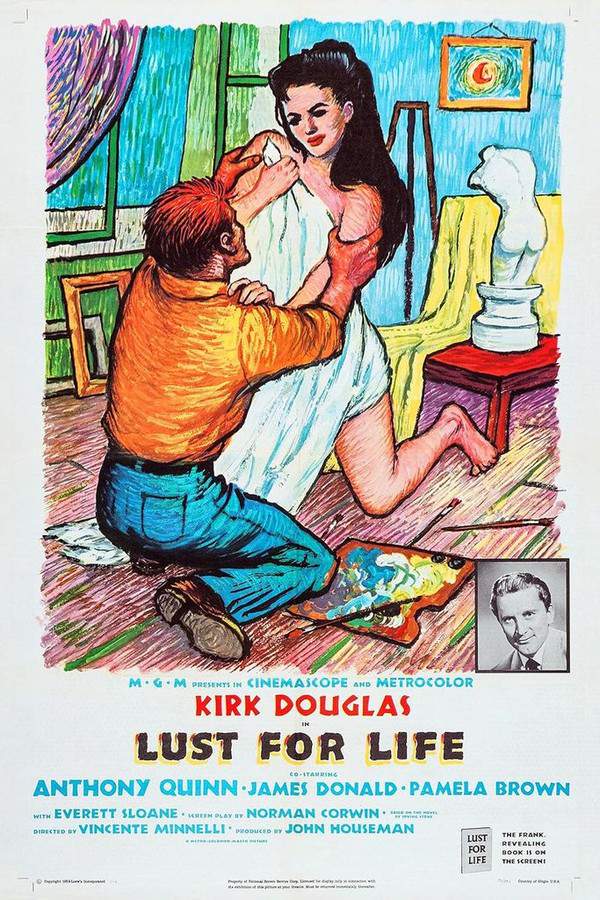
Lust for Life
Year: 1956
Runtime: 122 min
Language: English
Directors: George Cukor, Vincente Minnelli
This sweeping biopic explores the passionate and troubled life of Vincent Van Gogh, a brilliant artist struggling with mental anguish. Driven by unbridled creative fervor, he pours his soul onto canvas, seeking inspiration and validation. His tumultuous relationship with fiery mentor Paul Gauguin further complicates his journey as he battles self-doubt and seeks to overcome the darkness that threatens to consume him.
Warning: spoilers below!
Haven’t seen Lust for Life yet? This summary contains major spoilers. Bookmark the page, watch the movie, and come back for the full breakdown. If you're ready, scroll on and relive the story!
Lust for Life (1956) – Full Plot Summary & Ending Explained
Read the complete plot breakdown of Lust for Life (1956), including all key story events, major twists, and the ending explained in detail. Discover what really happened—and what it all means.
Vincent [Kirk Douglas] has trained to be a minister, like his father, but the church authorities deem him unsuitable. They assign him to a very poor mining community, where the harsh conditions and the miners’ daily grind pull at his conscience and he begins to sketch their world, choosing to tell their stories with his drawings rather than through sermons. The church leaders frown on his growing social activism and his care for the disadvantaged, marking a rift between his ideals and institutional doctrine.
He returns home to his father’s house, where a woman he obsessively loves—his cousin—rejects him because he cannot support himself. He follows her to her family home and, in a fervent display of devotion, places his hand over a candle flame, only to learn that she’s disgusted by him and wants nothing to do with him again.
He shifts toward art, and his cousin Anton Mauve [Anthony Quinn] steps in with paint and supplies, encouraging him to paint. His brother Theo van Gogh [James Donald] provides steadfast financial and moral support, becoming a crucial lifeline as Vincent grapples with poverty and pursuit of a true artistic voice. He also experiences a difficult chapter with a prostitute who leaves him, a reminder of how far he is from conventional success.
Yet his passion for painting only grows stronger, and he pursues his art with a fierce, sometimes painful, insistence on capturing what he sees, even as his inner vision feels elusive and imperfect. After his father’s death, he travels to Paris with Theo, where he encounters the world of the Impressionists and discovers new possibilities for color, light, and form.
The bond with Theo proves complex, and Vincent eventually heads to sunny Arles, hoping to forge a more independent path. There, Paul Gauguin (a fellow artist he met in Paris) joins him for a period, and life seems briefly bright and productive. But the intensity of Vincent’s obsession proves too much for Gauguin, and their collaboration ends in conflict, prompting Gauguin’s departure. In the aftermath, Vincent’s anguish erupts as he cuts off his own ear.
Seizures and instability follow, and he voluntarily suspends himself in a mental institution where he is allowed to paint. He signs himself out and, with Theo’s support, returns to a rural landscape to resume his work. While painting cornfields, he is haunted by the presence of the crows and the stubborn ache of not being able to render his vision exactly as he sees it. In a final, desperate moment, he pulls a revolver and shoots himself, dying in his bed a few days later.
In this sweeping chronicle, the film follows a life driven by a relentless search for truth in color and light, a struggle between spiritual duty and artistic impulse, and a love of humanity that persists even amid poverty, rejection, and despair. The portrayal captures the tenderness of his relationships, the frustration of his creative process, and the fragile arc of a genius who remains compelled to paint what the world looks like to him, until the last breath. [Kirk Douglas]
Last Updated: November 22, 2025 at 15:58
Unlock the Full Story of Lust for Life
Don't stop at just watching — explore Lust for Life in full detail. From the complete plot summary and scene-by-scene timeline to character breakdowns, thematic analysis, and a deep dive into the ending — every page helps you truly understand what Lust for Life is all about. Plus, discover what's next after the movie.
Lust for Life Timeline
Track the full timeline of Lust for Life with every major event arranged chronologically. Perfect for decoding non-linear storytelling, flashbacks, or parallel narratives with a clear scene-by-scene breakdown.



